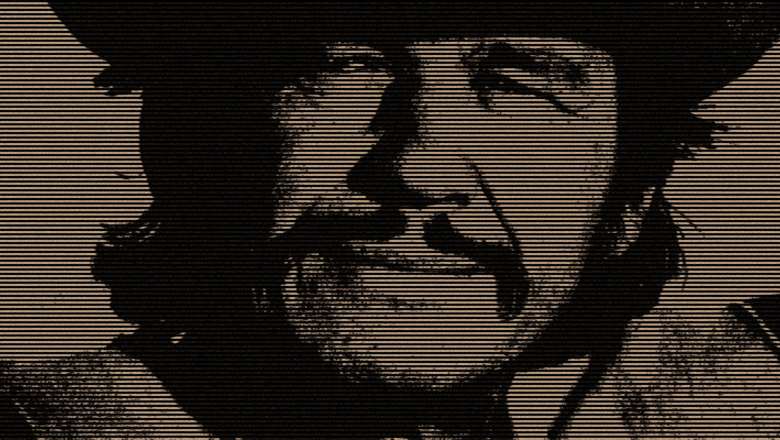Credits
Feature by: Cullen Gallagher, Matt Bailey, Leo Goldsmith, Thomas Scalzo, David Carter, Rod Bastanmehr, and Glenn Heath Jr.
Posted on: 02 November 2011
This November, Not Coming to a Theater Near You celebrates the 90th birthday of one of cinema’s most badass action actors – Charles Bronson – with two nights of the mustachioed macho man’s most iconic films, The Mechanic (on Fri, Nov 4) and Mr. Majestyk (on Sat, Nov 5). In conjunction with the screenings, we will be posting reviews of our favorite Bronson films here on the website over the next two weeks.
If ever a single word could stand alone as its own sentence, this is the one:
Bronson!
His is more than just a name. Charles Bronson belongs to that rare breed of artists whose very presence defines an entire genre. Chaplin. Fairbanks. Keaton. Cagney. Bogart. Wayne. Eastwood. Stallone. Some of the aforementioned actors may be better or worse than others, but now is not the time to make any final judgments; I draw such comparisons not to illustrate quality, but rather cinematic aura. One attribute that each of these actors share in common is a screen presence that is immediately recognizable, and definitively distinguishing.
“In an action film like Michael Winner makes,” Bronson explained, “there’s not that much time for acting. I supply a presence.” Never one for pretense, Bronson here undermines his own abilities as an actor. What does it mean to “supply a presence” if not to act? Bronson’s style is economical, direct, and acutely physical. A cold stare, hard jawline, wispy mustache (only in later years), and rugged build: these are ordinary enough characteristics for an ordinary man, yet when they belong to Bronson, they somehow seem extraordinary. Of equal importance is Bronson’s speech—or, as is often the case, the lack thereof. Bronson’s silence is less brooding than it is building. It keeps his thoughts hidden and makes his actions all the more sudden and surprising. Bronson doesn’t have to speak because he knows—and so does the audience—that his actions speak louder than words.
Bronson’s star persona makes for an unusual and fascinating case study. His background has all the makings of a mythological hero, and the roots of his working-class action-hero persona were planted from the very beginning. Born Charles Bunchinsky—later shortened to just Buchinsky—on November 3, 1921, he was the son of two Lithuanian immigrants and grew up in Ehrenfeld, Pennsylvania (aka “Scooptown”), a harsh and impoverished mining community. His father died when he was 10, and at that age the young Charles was sent to work in the mine like all the other men in town. There was little sign at that age that the boy would ever leave the mines, let alone become an internationally known artist. WWII saved the boy from almost-certain death from “black lung” like his father and other miners before him. After driving trucks in Arizona, he served as a B-29 tailgunner in the Pacific. When the war ended, he took advantage of the G.I. Bill to enroll in arts school in Philadelphia. His first love was painting, after seeing his first theatrical plays, Charles decided to change courses and set his sights on acting.
The mythology only continued to grow. Hard times in New York City, rooming with another aspiring actor (a then-unknown Jack Klugman), running card games (supposedly for the mob) in New Jersey, taking any small job to pay the rent and any small part just to get on stage: actors’ biographies are filled with similar such stories. In 1951, Charles and his new bride, Harriett, found themselves in Pasadena, with Charles spending his days at acting school and his wife working to support the family. Charles, still going under the name “Buchinsky” at this point, was 30—older, less handsome, and less eloquent than his classmates. Those very qualities that made him an outcast in school—his labor-wrinkled face, his work-hardened body, and strong-but-silent demeanor—instantly won him his first role as a character actor in a 1951 Hollywood production called You’re In the Navy Now.
It would be another 21 years before Buchinsky the supporting player became Bronson the superstar in 1972’s The Mechanic. In between would be a long, arduous path of bit parts in A-picture hits, walk-on roles in B-filler, the occasional lead in total flops, numerous television cameos, and, briefly, even his own series, Man with a Camera, in which he played a photojournalist. A name-change from “Buchinsky” to “Bronson” (supposedly taken from a street sign) saved him from HUAC because of his foreign-sounding name, and an unanticipated sojourn in Europe where he was viewed not as a background schmuck, but as a leading man, provided the actor with his first serious roles.
One of the things that makes Bronson’s career so interesting is that he was an unlikely star for an unlikely time. He entered Hollywood in the early 1950s, at a time when the studio system was falling apart, and taking the traditional star system with it. Twenty, or even ten, years earlier, and Bronson would have been a stock “heavy” with a steady stream of anonymous roles in gangster, boxing, and other “urban” pictures. But in the 1950s, with the studios on the verge of collapse, contracts weren’t given out to his kind, let alone leading parts. Small roles in big Hollywood films like The Dirty Dozen and The Magnificent Seven helped to familiarize Bronson to audiences, but he was always competing for screentime with large ensemble casts. It was television, independent films (like Roger Corman’s Machine-Gun Kelly), exploitation pictures, and European productions (like Sergio Leone’s Once Upon a Time in the West) that made Bronson a star. Everything that was a threat to Hollywood, and everything that upended the whole spectrum of film production, wound up making Bronson’s career possible.
Beginning with 1968’s Once Upon a Time in the West, Bronson began a string of films that matched his strong acting with equally capable scripts, cast, and crew. He became a brutal star for a brutal decade: his roles reflected how deeply seated violence was around the world at that time, and how second-nature killing was for average citizens, whether victim or perpetrator. He’s a love-spurned hitman in Sergio Sollima’s operatic and pulpy policier Violent City; a half-breed on a hunt for justice in Chato’s Land; a cop as cold and ruthless as the criminals he chases in The Stone Killer; an art lover, classical music aficionado, wine connoisseur, assassin in The Mechanic; a melon farmer fed up with corrupt politics in Mr. Majestyk; an everyman out for justice in Death Wish; an underground boxer during the Great Depression in Hard Times; a cunning undercover agent in the snowy Western thriller Breakheart Pass; and even Western legend Wild Bill Hickock in The White Buffalo. The 70s was a good decade for Bronson, where audience popularity, financial success, and artistic integrity (though not always recognized at the time) were not mutually exclusive.
Bronson became the working man’s action hero. Like a badge, his body wore the signs of his youth spent in the mine and his military service during his 20s. Those deep lines in his face, the labor-toned muscles covering his body, and quietly hardboiled demeanor and coldly determined demeanor—these weren’t studied affectations perfected in gymnasiums or in dressing rooms, but the very real products of his life. Bronson belongs to a unique group of action heroes that includes Lee Marvin and James Coburn, the likes of which hadn’t been seen before and haven’t been seen since. Fairbanks was suave and moved like a ballerina, and Bogart had that tough-yet-romantic tilt to his voice that signaled he was as much a lover as a fighter. Bronson is none of these things. Later action stars like Sylvester Stallone and Arnold Schwarzenegger would boast inhumanly big muscles; Chuck Norris and Steven Seagal would carry highly studied martial arts skills beyond the reach of average folks; and more recent actors like Jason Statham and Daniel Craig runway model looks. Bronson is a world apart from them: rough and brutal, a hardened product of a hardened life. His muscles are real world muscles, not the stuff of bodybuilders; he fights like someone who fought daily struggles to survive; he handles guns like someone who has seen death firsthand; and he looks like the world had been knocking him around since day one (and it has). The world may have knocked Bronson around, but it can’t keep him down. His craggy face is a testament to his survival and enduring toughness. His is a face to believe in.
Bronson’s stardom, however, was a double-edged sword. The type-casting, B-pictures, and exploitation plots that he shunned so much in his early days wound up being his stock-in-trade as a star in his later years during the ’80s and ’90s. There were some great roles—such as in Death Hunt, where he plays a Jack London-ish mountain man on the run from Canadian Mountie Lee Marvin (who, coincidentally, also made his screen debut alongside Buchinsky in You’re In the Navy Now)—but Bronson’s on-screen image was beginning to work against him. The cold killer/angel of vengeance/working-class machismo that he refined over the past few decades became fodder for exploitation maestros’ Golan and Globus and their Cannon Group. Ironically, Bronson is never so amiable or charming as in some of these movies. Seeing him in dad-like sweaters in Messenger of Death or going on dates in Death Wish 4: The Crackdown is an odd but undeniable pleasure for fans of the actor. Watching those movies is like revisiting an old friend, where fond memories of yesteryear are mixed with the joy of being in such loving company once again. And with his second wife, Jill Ireland, often playing alongside her husband, many of the later Bronson films do feel like a family reunion. (His third wife, Kim Weeks, would similarly act alongside her husband in the three Family of Cops films made during the 1990s). These productions may not be up to par (and, in some cases, are downright embarrassing), but Bronson never disappoints.
Whether knowingly or not, Michael Winner, who directed Bronson in four great films (Chato’s Land, The Mechanic, The Stone Killer, Death Wish) and two mediocre ones (Death Wish II and III), touched on the strength and weakness of Bronson’s films. “[He] has created a personality that is stronger than its pictures and is certainly more important than their contents,” explained Winner. “Now, most certainly, every film that he makes will simply repeat its predecessor—each will be no more than a framework for his particular personality.” It is Bronson, himself, that we are drawn to as viewers. His films might be stronger, on the whole, when someone like Winner or Walter Hill is directing or Elmore Leonard is scripting, but in the end, it is Bronson that carries the picture. Few actors have his strength of character. Many have tried, and some even console themselves with Academy Awards and other ego-boosting mementos. Bronson had none of those. While I may wish that he had gotten the critical praise that he was so deserving of, it is ironically fitting that he never received such industry accolades because he was never fully a part of that industry, anyway. He was always on the fringe, playing hitmen and half-breeds, cops and killers, always loners who bucked the system and did things their own way. From the beginning, Bronson was—and always will be—an individual, a rebel, and an unmistakable presence.
Introduction by Cullen Gallagher
By Cullen Gallagher, Matt Bailey, Leo Goldsmith, Thomas Scalzo, David Carter, Rod Bastanmehr, and Glenn Heath Jr. ©2011 NotComing.com
Reviews
-
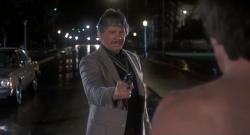
10 to Midnight
1983 -
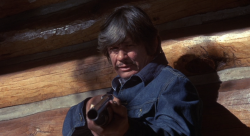
Mr. Majestyk
1974 -
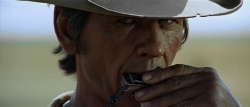
Once Upon a Time in the West
1968 -
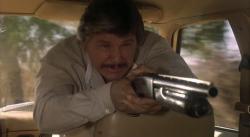
The Evil That Men Do
1984 -
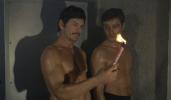
Farewell, Friend
1968 -
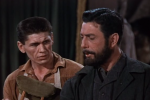
House of Wax
1953
We don’t do comments anymore, but you may contact us here or find us on Twitter or Facebook.



